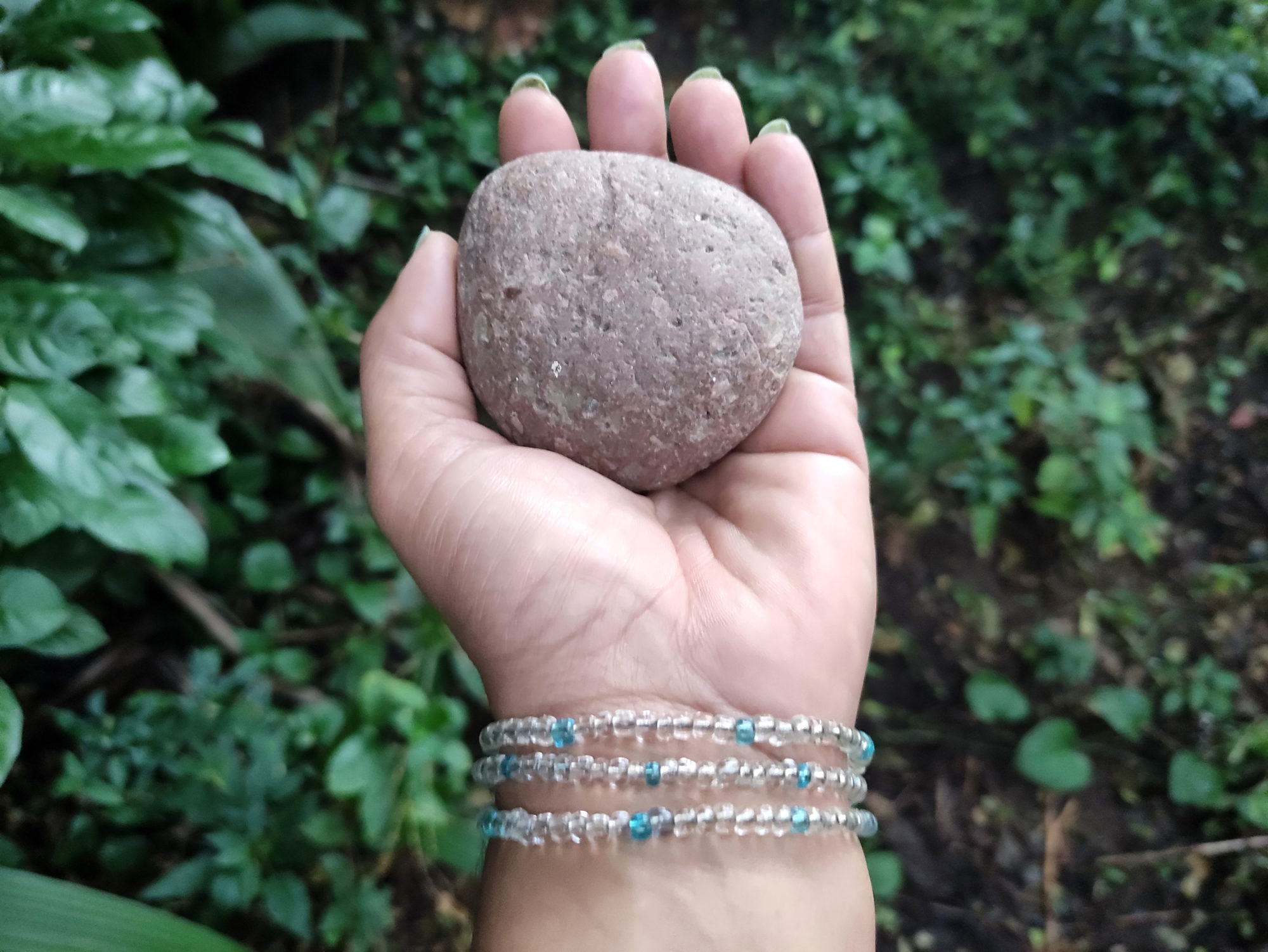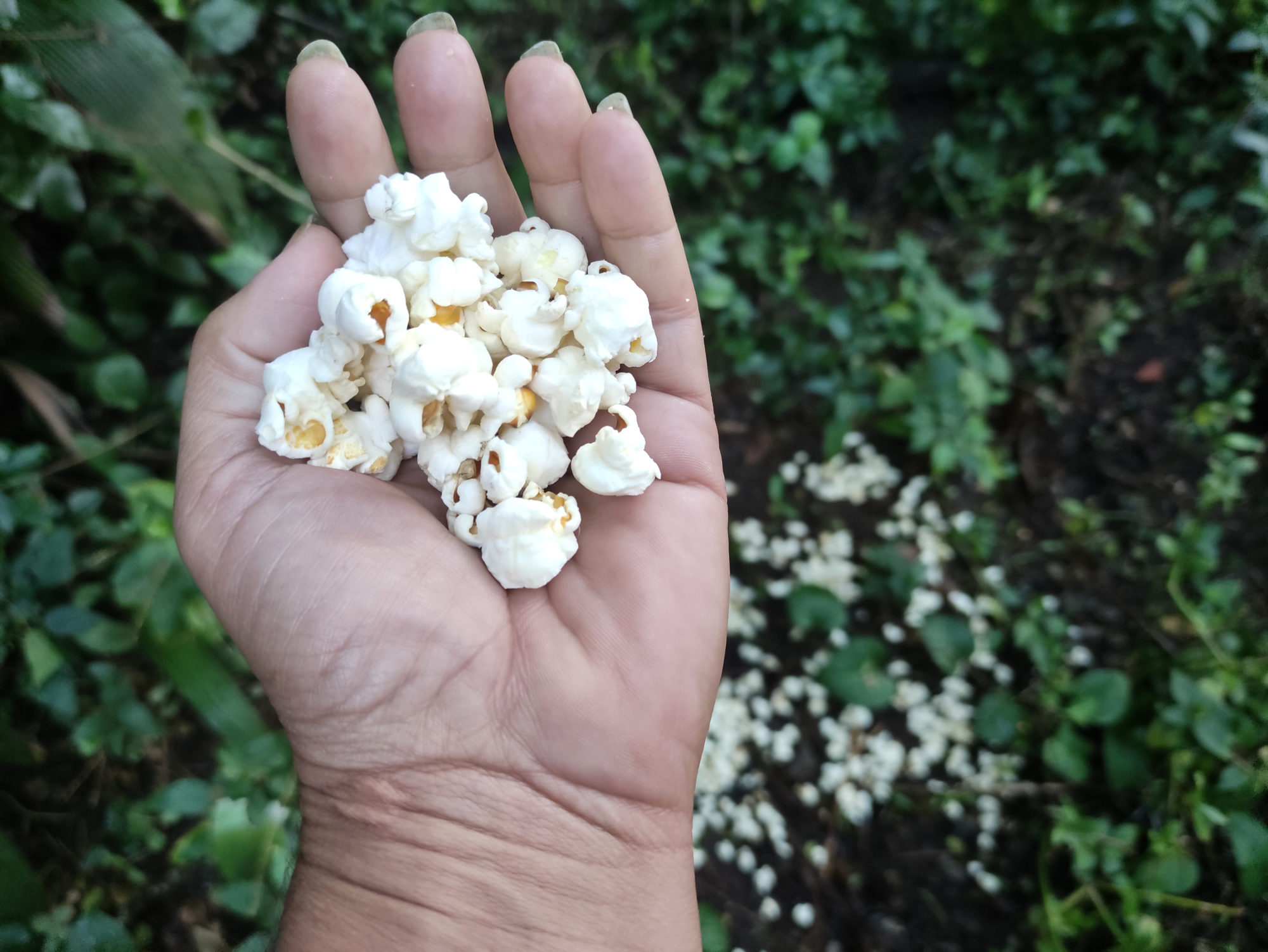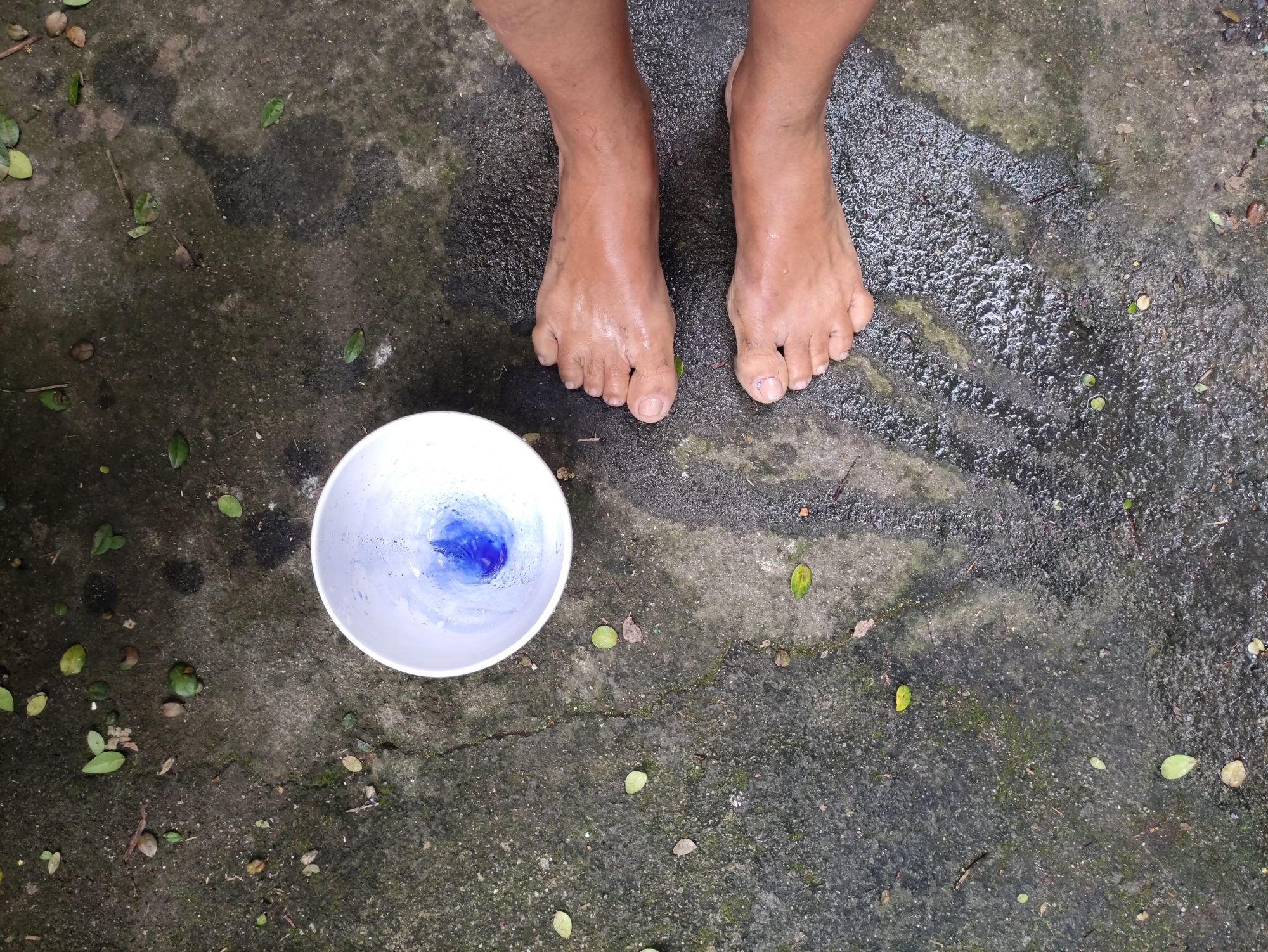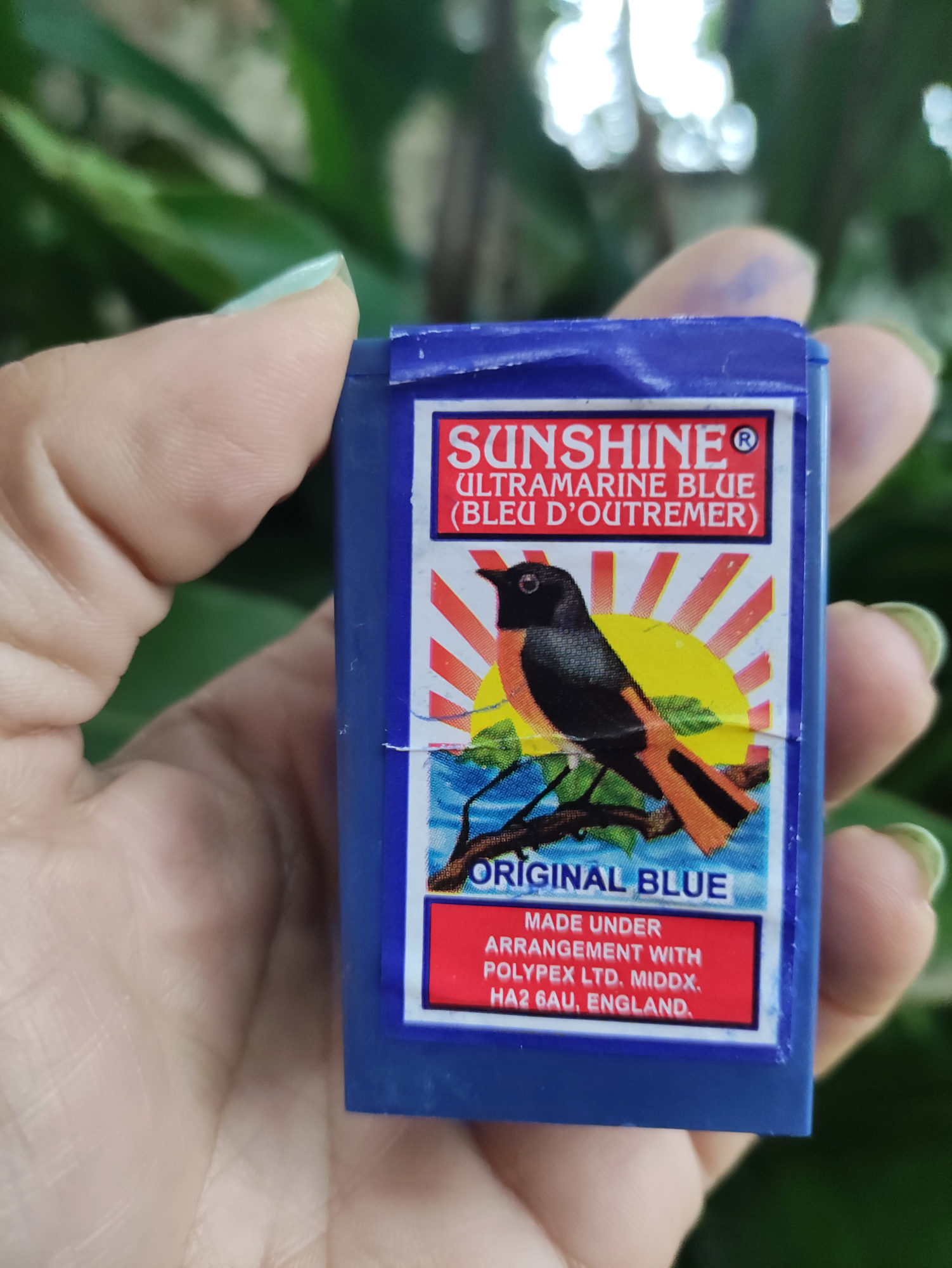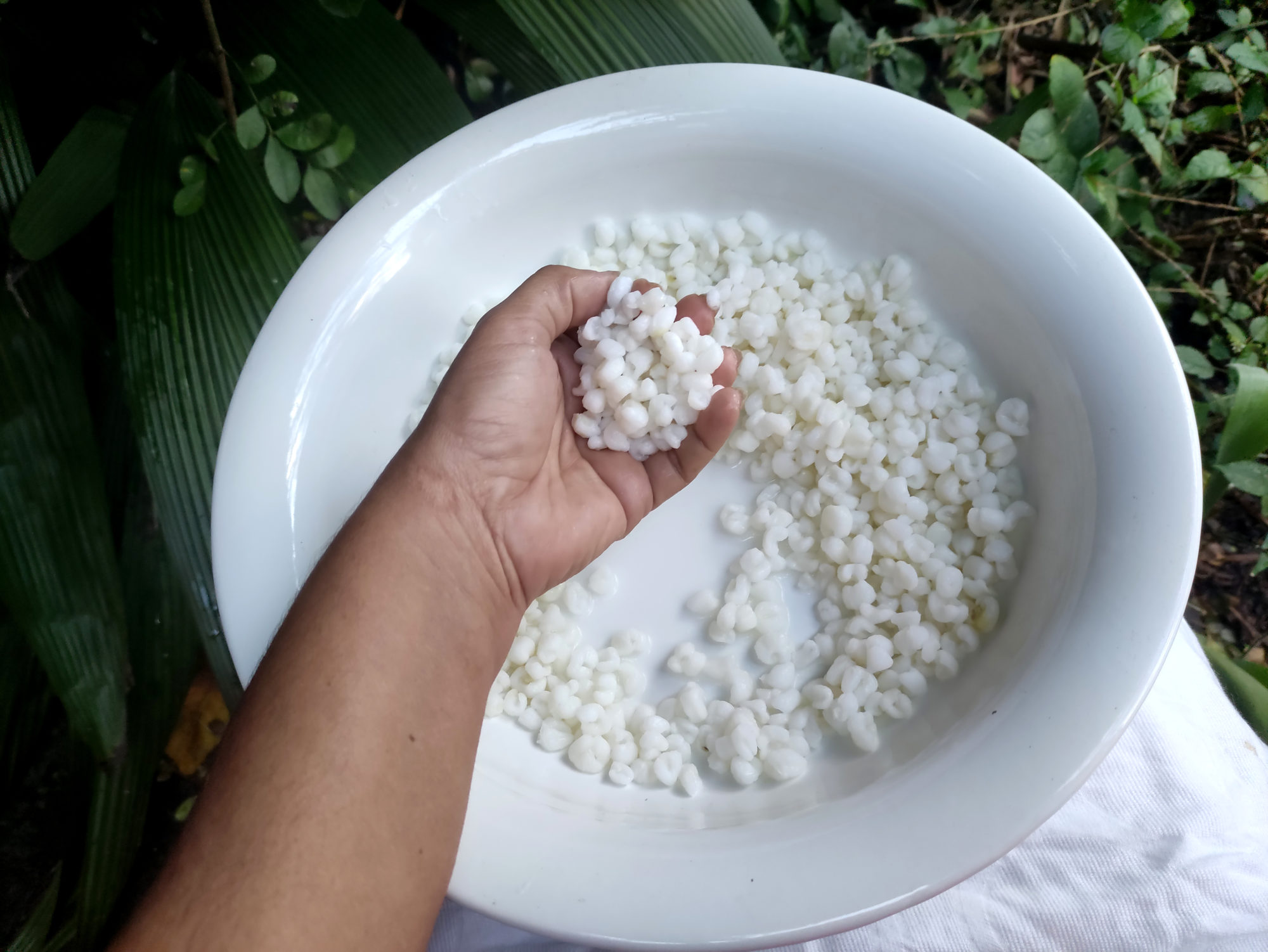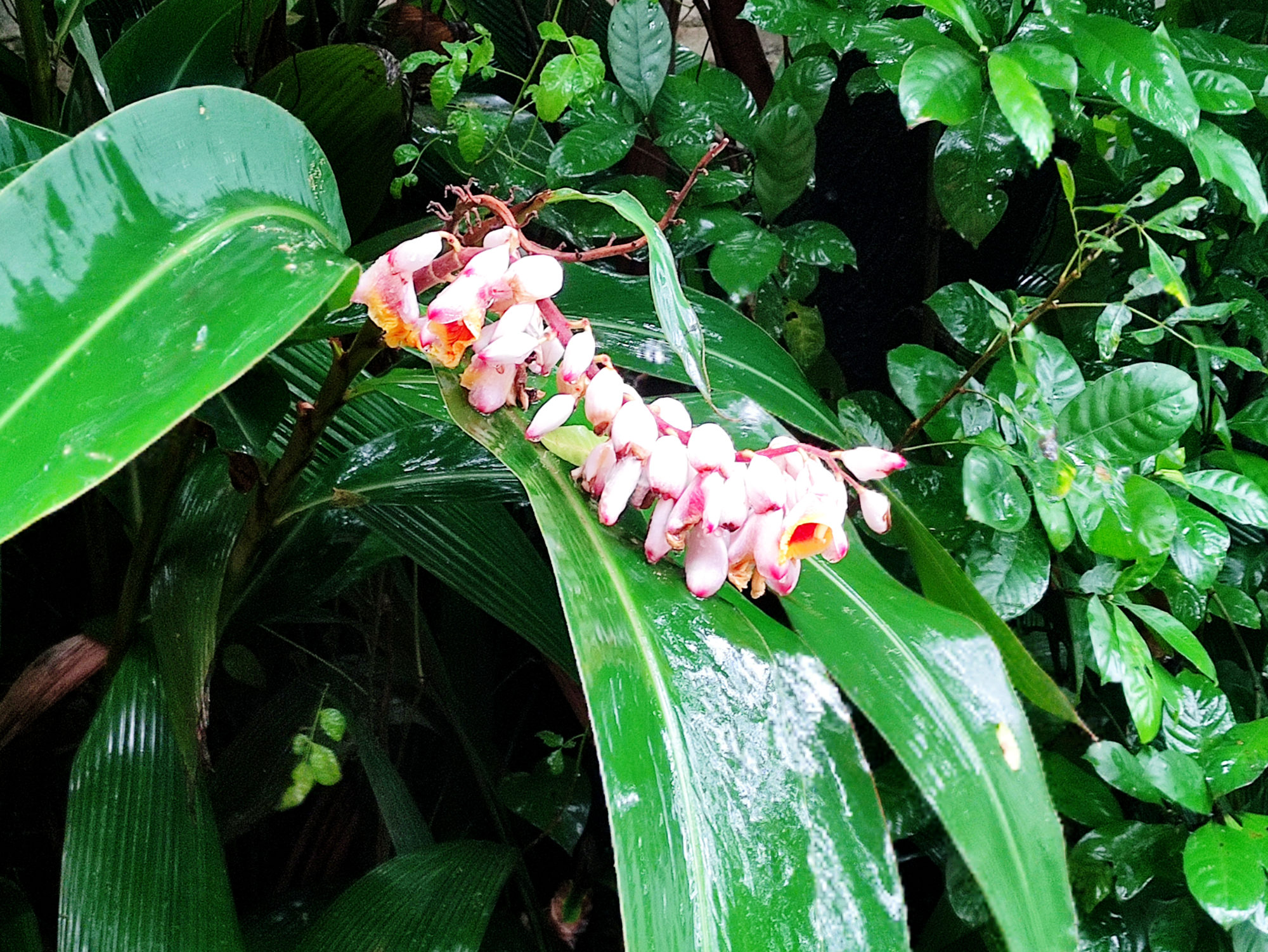3 Ebós* and a Herbal Bath
Làròyé!*
May we…?
This is a healing protocol for walking on moving grounds in turbulent times. We think of healing as a path, a method, and a purpose. Healing is a process of self-knowledge requiring intention on an individual level, yet it is at the same time a collective process that favors endurance. We think of healing as an inner exercise for trusting and letting go, a seed sown in soils (whose composition we might not know, exactly) watered by our hope that it will sprout. To germinate, a seed needs essential conditions: devoted affection, care, attention, and trust in the flow of life.
Through this text, we would like to share a small selection of rituals and cleaning practices from Candomblé*– the afro-diasporic syncretic religion that is also the matrix of spiritual, corporeal and intellectual resistance of Black and Afro-descendant populations in Brazil, throughout centuries of colonialism. Ebós and the Baths are common practices in Candomblé, they are simple procedures for daily life. They are open to those who engage themselves through intention and attention, and don’t require initiation, just a disposition in seeking traditional knowledges and different worldviews. These procedures are indeed adopted by many with multiple spiritual affiliations. In Brazil, syncretic practices are the result of a plurality of cultures and voices that constitute the very formation of the country and that have always been connected with its history and practices of resistance. This plurality and, therefore, our invitation, are simultaneously forms of appropriation, reproduction, reinvention, reclamation and renewed creativity.
There are different Nations and Houses of Candomblé, and different lineages that developed mostly in the areas of the Brazilian Atlantic coast throughout the Transatlantic slave trade, they build their traditions and practices through a continuous, mutual exchange with West and Central Africa for the past 200 years. It is important to highlight the relevance of the wisdom brought by the African Diaspora in the constitution of Brazil as a country, and how this South to South exchange was shaped by the crossroads of the Black Atlantic. The cultural circularities generated processes of identity reconstruction experienced by those affected by displacement: those who were uprooted from their territories and those responsible for their undertaking, the ones who were already there and the ones who came after. No one goes unscathed. The crossing affected, and still affects, everyone, although in very different ways.
In Brazil, the Yoruba culture manifested in and throughCandomblécan be understood as a philosophy: it transcends religion, it’s rather an ontology, as it not only provides spiritual beliefs and ethical values, but is also a way of life and form of being. Historically, it re-signifies the existence, it enables the reconstruction of beings – particularly of Black and Afro-descendant people, who were and still are, systematically attacked, abused, subordinated, incarcerated, violated, extirpated, banished and murdered by structural racism within the persisting coloniality. Candomblé asserts the permanence and immanence of African culture, the continuity of its existence not in fixed forms, but through its continuous transformation, as a constant becoming, against the violence of erasure and disappearance.
Candomblé is grounded in the cult of ancestry, the understanding of the archetypes of the orixás*, the cult of the elements of nature, the wisdom of living well and dying well. To be born, to die; to celebrate, to cry; to dance and sing; to take care of oneself and the ones around; to acknowledge the wounds, to heal, and to seek healing are components of the symbolic and ritualistic fields of Candomblé. Here, we call in Axé*, the vital energy, a fundamental element in Yoruba thought. In Candomblé, everything is thought out so that the axé circulates, grows and its potency augments. For this to happen, we have to constantly seek balance. When dealing with the orixás as archetypes, origin and destiny are together because origin is a principle, a law of constitution of things, of our paths, our odú*. It goes beyond dealing with a remote past: the origin constitutes us as living beings, in another form of permanence. To think about the beginning, we are provoked to think about the relationship with the end, but these are not notions marked in a linear temporality, and there is no separation of life from death. Death gives meaning to life.
Being a constant reflection and with a practical aspect of the search for balance in life, to live better and to die well – the pursuit of a good life means to have good health in your body, in your acts, and in your achievements. For this, actions and rituals have the purpose to create balance, activation and expand the Axé. Among the rituals, the Ebó is a procedure meant to balance the vital energy, aligning the head with the heart, offering guidance across moving grounds.
the Ebós
Ebó is the food with which you feed your soul and nurture your body. You can transform an element with a sense of healing, of circulating energy. Ebó invokes and circulates Axé, it does not work only on physical health, but it nurtures the Orí* (head), the individual self, brings strength to the thoughts, helps to have discernment, perception, and intuition. Ebó starts with a search for balance and makes our existence smooth and potent at the same time. Having long studied the African Diásporas in Brazil, pedagogue, decolonial thinker and researcher Luiz Rufino suggests: “So why not think of Ebó as a technological procedure of enchantment intervention in the epistemic field? Since knowledge based on universality is a logic of disenchantment, the Ebó actually produces positivization, not in the sense of being positivist, but in the sense of increasing vital force. It can be corporeal and spiritual, a sensitive immersion in the conditions of pure potentiality, while counterposing the logic of coloniality. It can be seen as a technology to be invoked by other forces and other spiritualities as a principle of knowledge and as a principle of inventiveness”.
Thus, in a decolonial framework, the intrinsic creativity in Ebó can be a form of communication, a process for those in search of transformation, looking towards another dimension, connecting in this case within the Yoruba cosmological dimension. Ebó is a rite and an encounter, it generates the sense that we can re-assemble our fragmented selves, resignify our existences, it is a call to our ancestry, moving beyond Western epistemologies. It is an invitation to stop and look around: where are we now? What is there calling for attention? Where shall we put our intention? Therefore, this path towards enchantment starts with the questions of who we are and what we want to transform.
We encourage you, dear Reader, Researcher, Learner, to listen to your inner questions and to try one of the Ebó recipes that we offer as a ritual. And to take an herbal Bath right after.
But first, throw a stone through time.
The Recipes:
Ebó de Cura (Healing Ebó)
Ingredients: popcorn corn + a handful of sand (so that the corn does not stick to the bottom of the pan).
When the corn starts to pop, stir it so it doesn’t burn. Take the popcorn out of the pot and place it in an earthly/clayware or a straw pot.
In a calm place, barefoot, throw the popcorn over your body, and salute the deity of the Earth, of Health and Disease – Omulu/ Obaluaye*. Evoke 3 times: “Atotô! ATÔTÔ!! (meaning silence…) and ask the owner of life to bring healing for all your ills. May he bring you health, and may sickness and death not reach you before your time. Afterwards, you can pick up the popcorn on the floor and bring it to a garden, leaving it on the earth.
Ebó Abre-Caminhos (Open-pathways Ebó)
Ingredients: Blue indigo powder (Oagi Sunshine Ultramarine Blue) and water
Oagi powder belongs to Ogun*, the god of the paths and of all technologies. Mix a handful of oagi powder with about 5 liters of fresh water. Mix well until the powder dissolves. Take this bath preferably in nature or close to it. Completely naked, take a mug and throw the blue water from the top of your head to your feet. Throw the water all over your body and over the soles of your feet, asking Ogun to stay favorable to your journey and life path. Ask him to open your pathways and fight against all evils and disappointments. Not all paths are smooth but Ogun will comfort you in your journey.
Ebó de Fortalecimento (Strengthening Ebó)
Ingredients: Canjica branca (a sweet Brazilian dish made with white corn)
Cook 250 grams of white “canjica” in plain water, 6 parts of water to one part of “canjica”. The canjica should cook but the kernels should not fall apart. Put it aside and let it cool down. Separate the water that is left over from the canjica and bathe your whole body with it, especially your head (Ori*). Ori is our individual head and essence, it is important to keep it potent, positive and strengthened.
Separate the cooked “canjica” into two parts. Measure a handful with your right hand, and place it on top of your head, tie it with a white cloth to keep the “canjica” in place for one night. The other part should be placed in an all white dish or pot. Light a candle with your Ori‘s intention, so that it gets stronger, intelligent and tranquil to face life, and so that it will always show you the truth of who you really are. It is necessary that you sleep with a handful of “canjica” on your head. When you wake up, carefully remove it and put it in a nice garden, a clean place.
Banho Cheiroso (the aromatic herbal bath)
Ingredients: Broad-leafed green basil, great Basil – Efinrín, a popular plant that belongs to Yemanjá* and Oxum*. Flowers of Alpinia nutans (flor de Colônia), that belongs to Yemanjá.
A bath is a path. We are not talking of an herbal bath in a bathtub with candle lights, but a physical and metaphorical way of washing yourself. As in the Ebó to open up the pathways, the recommendation is to use a mug and throw the water on your Orí (head), letting it flow through the body down to the feet – sensing the head, the feet, the ground and the water. You can take the aromatic herbal bath any time, but it is recommended to take it after you finish one Ebó, to potentialize the energy it brings to you.
Before using the herbs, the protocol is to evoke Ossaim*, who invites us to enchant and sing the leaves. Herbs can heal, but it is necessary to be careful, the same herb that is medicine when badly administered can become poison.
Ò mọ̀ jẹ́we pé mo sọ̀rọ̀ ò
Ò mọ̀ jẹ́we pé mo sọ̀rọ̀ ò
Ó gbè lọ́wọ́ mi ò gbẹ̀ lọ́wọ́ mi
Ò mọ̀ jẹ́we pé mo sọ̀rọ̀
He knows, he is the leaf to whom I speak slowly
He knows, he is the leaf to whom I speak
He gives me support, he gives me help, he sustains me and helps me
He knows, he is the leaf to whom I speak slowly
Macerate the fresh leaves with your hands. Keep in mind your wishes and say them out loud. It is important to vocalize them. Visualize the images that inspire you and make you feel good; ask that the power of Yemanjá* and Oxum* be present and act in you and in your life. You are the priority in your life.
Add fresh water to the macerated leaves and leave it for 4 hours in a basin. Strain the liquid and separate the maceration to put in a garden or in a plant pot as fertilizer. It is a very fragrant and aromatic bath, with properties to cut negativity and attract good fluids and good luck. It has the attributes of the initiation and purification baths of Candomblé, and it can be combined with other herbs. As these herbs belong to two powerful yabás*, the ones who protect the balance between the earth and life, it is an excellent protective bath for washing the entire body and head.
The flower known as “Colônia” in Brazil, Tòtò by the Yorubás, is often used because it is an Eró* leaf: calming and bringing insights. It enters the purification baths of all initiates and those who seek balance with themselves. We use the leaf macerated in fresh water with the flowers and bathe the whole body, giving special attention to the head. By the way, it is also recommended to wrap the fresh “Colônia” leaves around the head to appease internal conflicts and find the necessary guidance that favors us.
the stone through time
Làròyé!
We are happy that you arrived here.
We may assume that this text and recipes might have caused some discomfort or doubts. We also feel uncomfortable to make this invitation, it’s challenging to navigate the im/com-plications of a digital institutional space around the topic of healing, healing the colonial wound. Yet, it felt necessary, alongside theoretical drifts, to offer an embodied possibility, to experience healing through simple procedures that make us come back, – to the self and to the body. The body we inhabit is our first home, our presence in the world. Homecoming, to return home is necessary. To go back to the place of affects and ancestral memories that begin in our bodies. For us, returning home means nourishing ourselves and establishing a connection with the sacred Afro-diasporic experience. An experience that is enchanting: it en_chants life, it en_chants knowledge.
It is time now to evoke Exú*. Exú, who is life in movement, Exú, who is infinite… His dwelling place is the crossroads, a place not so far away from Cartesian and Western thought. Exú is at the crossroads in which diverse imaginaries and ways of thinking meet, where worlds that were torn apart or considered opposite, transverse each other and meet… There is a Yoruba saying that affirms: “Exú killed a bird yesterday, with a stone he threw today”. A thrown stone as an opening towards other possible paths, towards the crossings of worlds and wisdoms, it is an invitation to other forms of inhabiting our bodies and our fields, transforming the way we are ‘in relation’. In this sense, it is with the stone thrown in time that Exú makes and remakes – not like Sisyphus who rolls the stone all the time to the top of the mountain and releases, to push it again and again indefinitely, eternally. The notion here is of a time that is synchronic. Igbà*. We reinvent the past, The future is ancestral.
So, dear Reader, Researcher, (un)Learner,
We hope you will soon enough try one of the recipes shared here.
But, before you leave, can you say your inner questions out loud?
One more time, please.
Muito Axé, e
Saravá!
Karla & Daniela
A small glossary
Axé / Àṣẹ – vital creative force of all beings and elements of the universe, vital energy, power, potency, strength.
Eró – leaves with calming properties, bringing insights and awareness.
Ewé – leaf, plants, herbs.
Igbà – time, period, season. The notion of time for the Yoruba is different from the West. Time is not linear, with beginning, middle and end. Time is synchronic, in which present, past and future coexist.
Làròyé! – translates to “He is the Controversy!”, the ceremonial greeting for Exú.
Odù – destiny, paths.
Orí – head; a deity that governs each human being, offering guidance through his destiny. The orí has a record of all the ancestral emotions and experiences.
Orixá / Órìṣà – African gods from Yoruba ethnicity; energies of the universe that are present in feelings, emotions and natural phenomena. The cult of these divinities aims to balance the energies within and around the human being. They are mystically considered as deified Yoruba ancestors who act as intermediaries between human beings and the Creator: Ọlọ́run.
Yabás – all the female Orixás.
Orixás mentioned in this work:
Exú / Èṣú – The interlocutor of the divinities, bearer of offerings to the gods. Runs communication, sexual energy, ambiguity. He is the lord of all paths and crossroads.
Ọbalúwáiyé – Ọmọlu – original from Daomé, Orixá of Healing, lord of the inner of the Earth, who rules health and disease.
Ogum/ Ògún – Originally from the Yoruba city of Ìré, he is the lord of confrontations, of wars, of technological advance. His ceremonial greeting is Ógún yè! (Ogun is life!)
Ossaim / Ọ̀sányìn – male orixá of the Yoruba city of Íráwó, who is the owner of leaves, connoisseur of flora, possesses mastery over the plants and natural medicine.
Oxum / Ọ̀ṣùn – female orixá of sweet waters, native of the Yoruba city of Ilẹ́ṣà. Mistress of the fecundity of women, love and seduction.
Yemonjá / Yemọja – female orixá originating from the Yoruba city of Abẹ́òkúta, her name is a combination of the words: yéyé (mother) ̣̣̣̣̣̣+ ọmọ (son) + ẹja (fish), meaning “the mother whose children are fish”, her dwelling is the sea and the oceans. There is no initiation ritual in which she is not revered and worshipped. She is a powerful deity, the owner of our head, no matter what our orixá is. In every ritual for the head, there is the presence of the fish. Isn’t it through the head that the fish cross the currents? That is why she is known as Yá Ori – the Mother of all heads, also the head in the sense of the mind and the inner self.
References
Fatumbi Verger, Pierre (1981). Orixás deuses iorubás na África e no Novo Mundo, Salvador da Bahia: Editora Corrupio. // (Orishas, yoruba gods in Africa and in the New World).
Muniz Sodré. (2017). Pensar Nagô, Petrópolis: Editora Vozes. // (To think Nagô)
Pessoa de Barros, José Flávio/ Napoleão, Eduardo (1999). Ewé òrìsà. Uso litúrgico e terapêutico nas casas de candomblé jêjê-nagô, Rio de Janeiro: Betrand-Brasil. // (Ewé Orìsà. Liturgical and therapeutic use in Jêjê-Nagô candomblé houses.)
Rufino, Luiz (2019). Pedagogia das Encruzilhadas, Rio de Janeiro: Editora Mórula // (The pedagogy of the crossroads)
